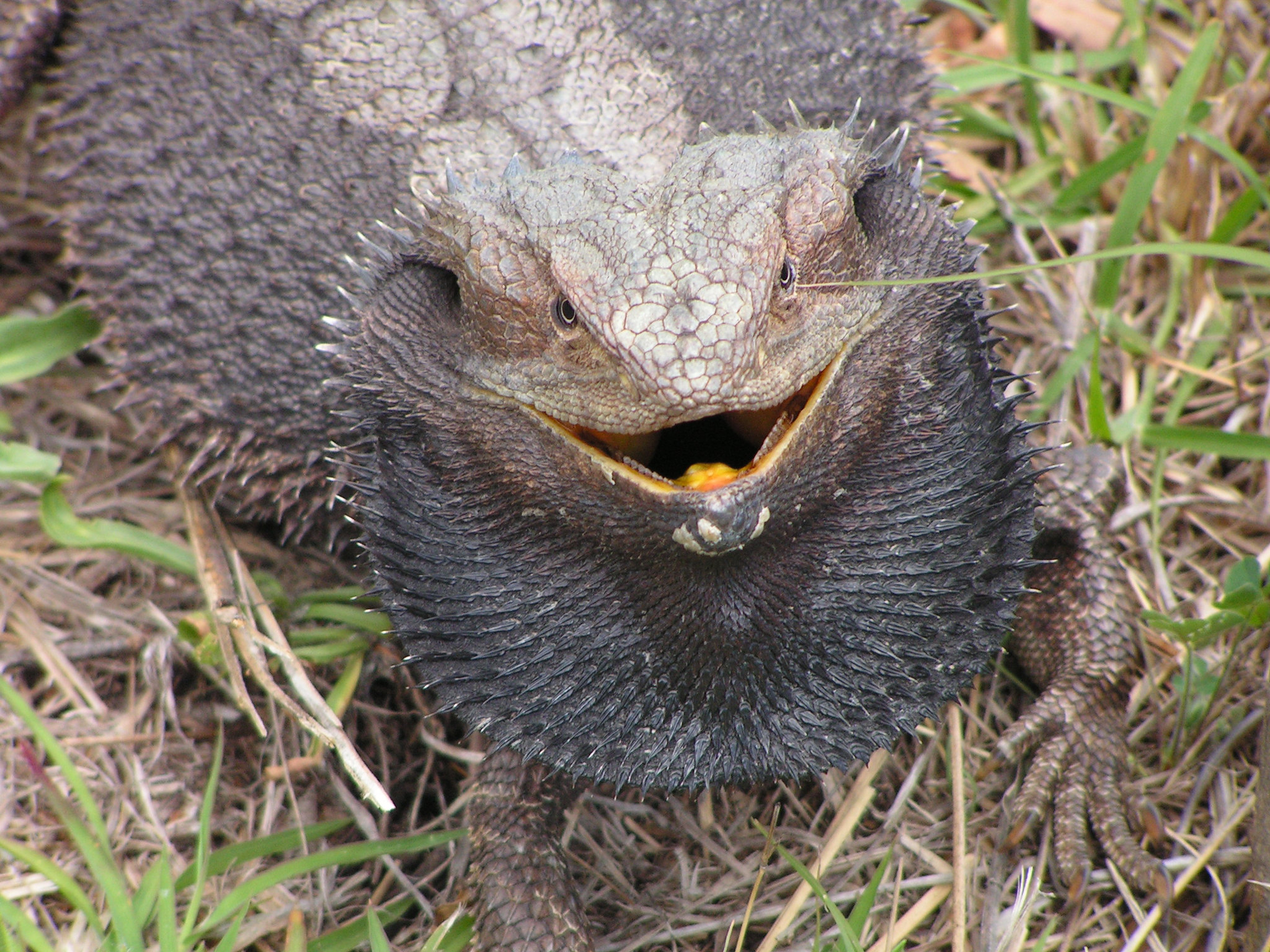Behaviour
Diet
Forages on roadsides on insects, worms, snails, small lizards, flowers, fruits and other soft plant matter.
Movement
Active during day, often perches on logs and dead branches, retreat to shelter of log, rock or burrow during winter, will freeze if frightened, or wil attempt to scare off opponent by standin gup, inflating its body and ‘beard, and opening its mouth wide to reveal bright yellow lining. May rush an intruder and will bite if handled. Some movements include: head-bobbing, arm-waving, push-ups, head-licking, beard-erection, body inflation, biting and colour-changing. When threatened will open its mouth and display the spiny throat or beard.
Breeding
Dominant males display frequently and are very aggressive/territorial, only allowing juveniles and females to enter area.
Field Guide
Improve your identification skills. Download your Eastern Bearded Dragon guide here!





